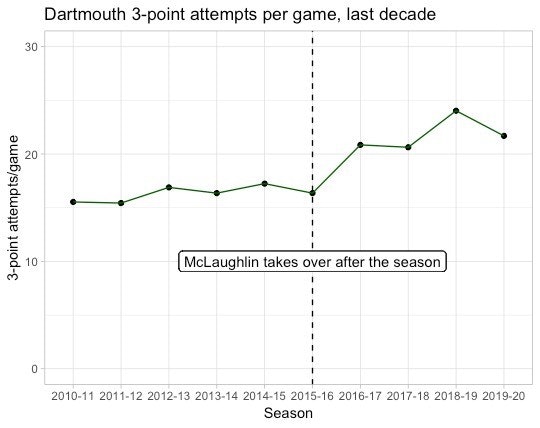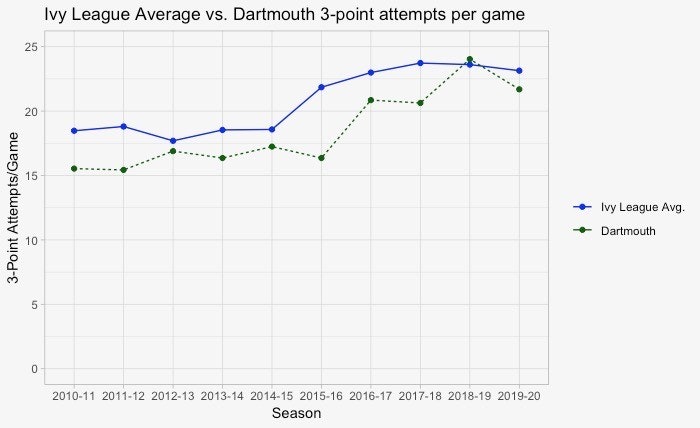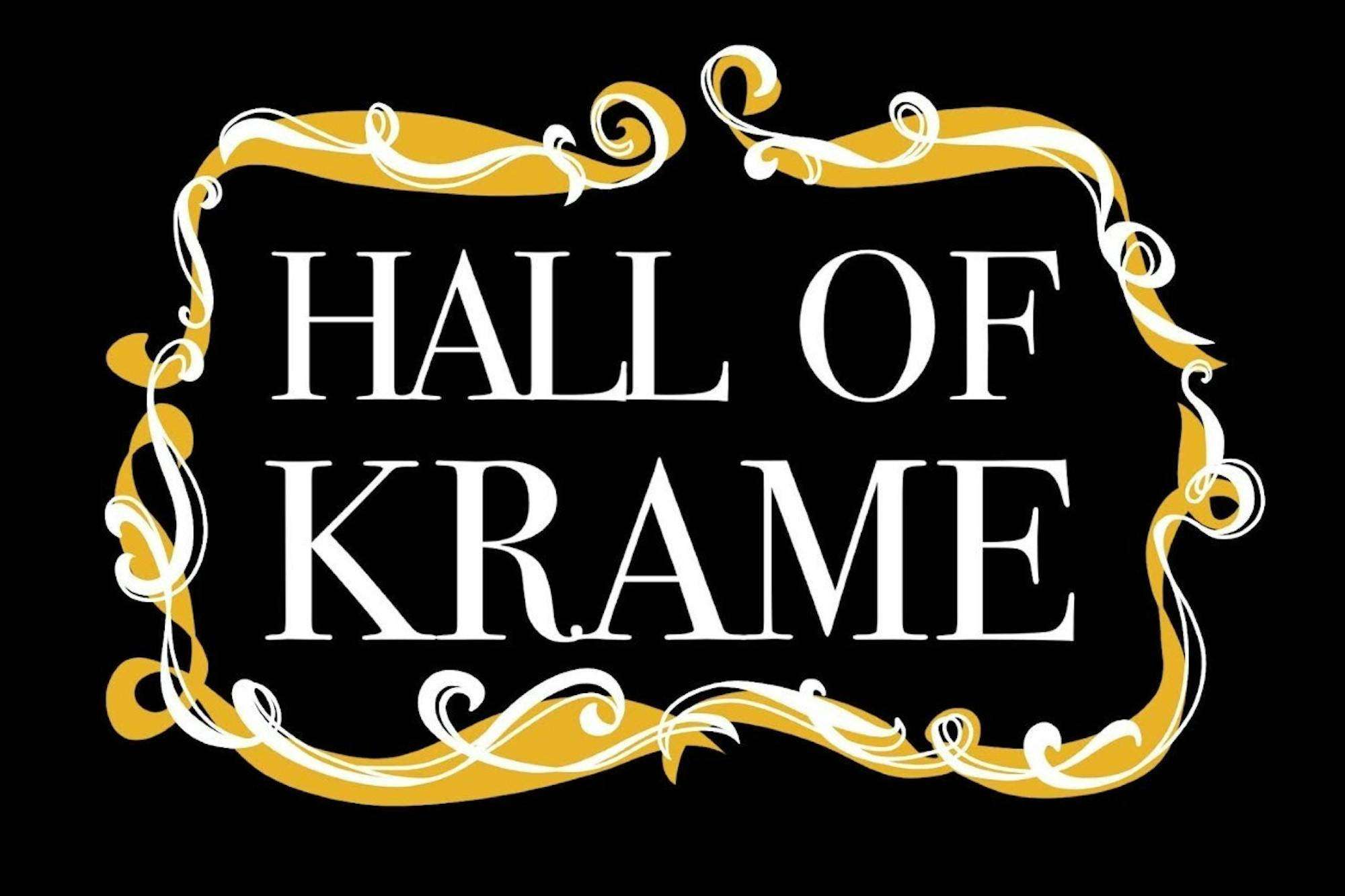The 3-ball just wouldn’t fall for Big Green men’s basketball on Tuesday night against Boston College in its first game back since March 2020.
Seemingly insistent that the team’s first points of the season come via the 3-pointer, Dartmouth took its first four field goal attempts from behind the arc, missing the mark and falling behind 7-0 early. Brendan Barry ’20 finally hit the team’s first field goal with a 3-pointer seven minutes into the game after six missed team threes, but at that point, the Big Green was already down 13-5.
The game plan early for Dartmouth seemed clear: shoot a barrage of 3-pointers to keep up with its ACC opponent. At halftime, Dartmouth found itself down 42-19 on a paltry 2-14 shooting from three. The second half was slightly better, with Dartmouth making four of 15 3-pointers, but the team’s final tally in the 73-57 loss was 6-29 from deep, a 20.7% 3-point percentage. The 29 3-point attempts — including 11 from Barry — represented more than half of the Big Green’s 56 total field goal attempts.
Head coach David McLaughlin took over before the 2016-17 season, and if the spike in 3-point field goal attempts since then is any indication, we should continue to see the Dartmouth offense rely heavily on threes.
In the first six years of the decade before McLaughlin took over, the Big Green typically shot between 15 and 17 3-point attempts per game, topping out in the 2014-15 season at 17.24 3PA/G and averaging 16.30 3PA/G over the six-year span. Since then, Dartmouth has averaged 21.80 attempted threes per game over McLaughlin’s tenure, including 24.03 3PA/G in 2018-19.

It’s important to put this increase in three-point attempts in comparison with the rest of the Ivy League, though. Ever since Warriors point guard Stephen Curry, the Greatest Shooter of All Time™, shattered 3-point records en route to back-to-back NBA Most Valuable Player awards in 2014-15 and 2015-16, the Ivy League — like most of college and professional basketball — has become very three-happy, averaging about 23 3-point attempts per game or more over the past four seasons.
Before Dartmouth’s recent surge in 3-point attempts, the team consistently ranked near the bottom of the conference in 3PA/G. Among the 10 seasons played by each of the Ancient Eight teams between 2010-11 and 2019-20 (80 seasons combined), Dartmouth’s six seasons preceding McLaughlin’s tenure all fell in the bottom quarter in terms of 3-point attempts per game, with five seasons in the bottom 20%. Even with the Big Green’s increase in 3PA/G, Dartmouth still has fallen below the Ivy League average in nine of the past 10 seasons.

Looking at Dartmouth’s 3-point attempts per game compared to the Ivy League average, the 2018-19 season, in which Dartmouth shot 24.03 3PA/G, stands out. That season, Barry took 182 threes — more than six per game — representing 56 more 3-point attempts than anyone else on the team and 62 more than his previous career high.
Barry’s arrival at Dartmouth in 2016-17 coincided with McLaughlin’s hiring and Dartmouth’s 3-point surge, although Barry only shot just over two 3-point attempts per game his freshman year. When he redshirted the 2019-20 season, Dartmouth dropped back down to 21.69 3PA/G. This was still Dartmouth’s second highest total of the decade, so the Big Green’s newfound prioritization of 3-point shooting can only partially be attributed to Barry, but having him back after a stint at Temple University last year should significantly increase Dartmouth’s 3-point attempts nonetheless.
Barry’s return and the likely boost in 3-point attempts is good news for a Dartmouth offense that has relied heavily on the 3-pointer during McLaughlin’s coaching tenure. Barry’s 2-for-11 shooting performance from beyond the arc on Tuesday night was a far cry from his 44.5% career 3-point percentage entering the game, which ranked fifth among active players in Division I men’s basketball. He also led all Ivy League qualifiers in 3-point percentage in 2018-19, and his 44.5% overall mark that season from deep was 10th in the nation.
It’s no coincidence that Dartmouth put up three of its highest four 3-point percentages of the decade in the three seasons that Barry has played for the team so far, from 2016-2019. Dartmouth’s increase in 3-point attempts has generally corresponded with an increase in efficiency from downtown despite the league’s average 3-point accuracy decreasing (see graph below). Without Barry last year, however, Dartmouth’s 3-point percentage dropped dramatically. Dartmouth shot a combined 36% on 3-point attempts from 2016-17 through 2018-19 but shot only 32% from deep in its last full season.

With Barry returning this year to an offense that has depended heavily on 3-point production during McLaughlin’s tenure, we can expect Dartmouth to keep shooting a high volume of threes in line with the rest of the Ivy League. In order to have a chance at the team’s first postseason conference tournament appearance since the playoff was created before the 2016-17 season, the Big Green will need to improve dramatically over its season-opening 20.7% 3-point percentage against Boston College and match or exceed the team’s efficiency at a high volume from the 2018-19 season.




